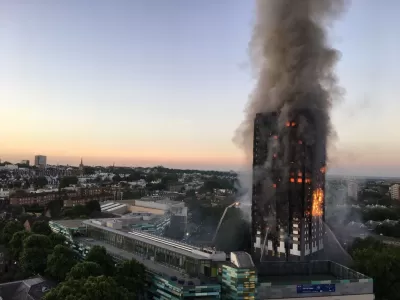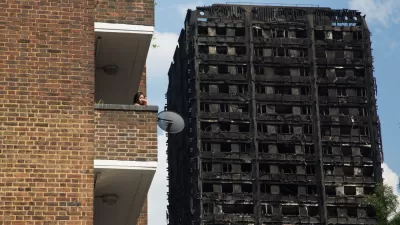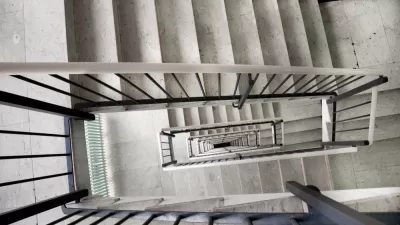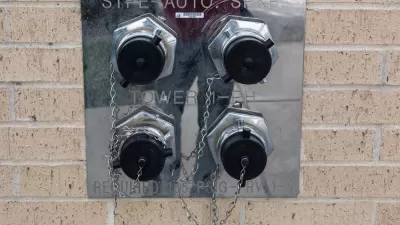Fire safety experts are rushing to explain the horrific scene in London's Kensington neighborhood last night—after a fire destroyed a residential high rise. The building was recently retrofitted to meet efficiency standards.

Oliver Wainwright and Peter Walker write: "'A disaster waiting to happen,' is how the architect and fire expert Sam Webb describes hundreds of tower blocks across the UK, after the fire at Grenfell Tower in Kensington that has left at least six people dead." [As of this writing, the fatality total has reached 12, but it is expected to increase.]
Webb is a leading expert on fire safety after surveying residential tower blocks for a report to the Home Office in the early 1990s. At the time, more than half of hundreds of buildings didn't meet basic fire safety standards.
"I really don’t think the building industry understands how fire behaves in buildings and how dangerous it can be. The government’s mania for deregulation means our current safety standards just aren’t good enough," Webb is quoted saying in the article.
A terrible aspect of the tragedy at Grenfell Tower, according to another source cited in the article, "is the flammability of insulation panels that are being used to clad postwar buildings to bring them up to date with today’s thermal standards." Grenfell Tower recently underwent a "£8.7m refurbishment of Grenfell Tower saw the building clad with 'ACM cassette rainscreen' panels, an aluminium composite material covering insulation panels, which could have caused the fire to spread more quickly up the facade of the tower."
FULL STORY: 'Disaster waiting to happen': fire expert slams UK tower blocks

Planetizen Federal Action Tracker
A weekly monitor of how Trump’s orders and actions are impacting planners and planning in America.

Maui's Vacation Rental Debate Turns Ugly
Verbal attacks, misinformation campaigns and fistfights plague a high-stakes debate to convert thousands of vacation rentals into long-term housing.

Restaurant Patios Were a Pandemic Win — Why Were They so Hard to Keep?
Social distancing requirements and changes in travel patterns prompted cities to pilot new uses for street and sidewalk space. Then it got complicated.

In California Battle of Housing vs. Environment, Housing Just Won
A new state law significantly limits the power of CEQA, an environmental review law that served as a powerful tool for blocking new development.

Boulder Eliminates Parking Minimums Citywide
Officials estimate the cost of building a single underground parking space at up to $100,000.

Orange County, Florida Adopts Largest US “Sprawl Repair” Code
The ‘Orange Code’ seeks to rectify decades of sprawl-inducing, car-oriented development.
Urban Design for Planners 1: Software Tools
This six-course series explores essential urban design concepts using open source software and equips planners with the tools they need to participate fully in the urban design process.
Planning for Universal Design
Learn the tools for implementing Universal Design in planning regulations.
Heyer Gruel & Associates PA
JM Goldson LLC
Custer County Colorado
City of Camden Redevelopment Agency
City of Astoria
Transportation Research & Education Center (TREC) at Portland State University
Jefferson Parish Government
Camden Redevelopment Agency
City of Claremont





























